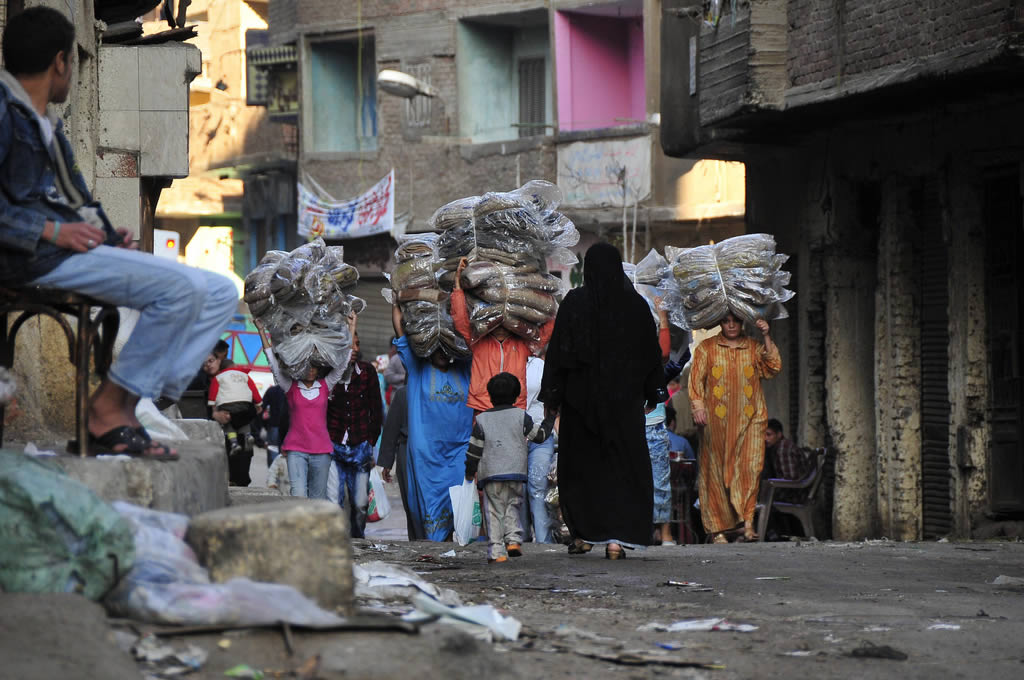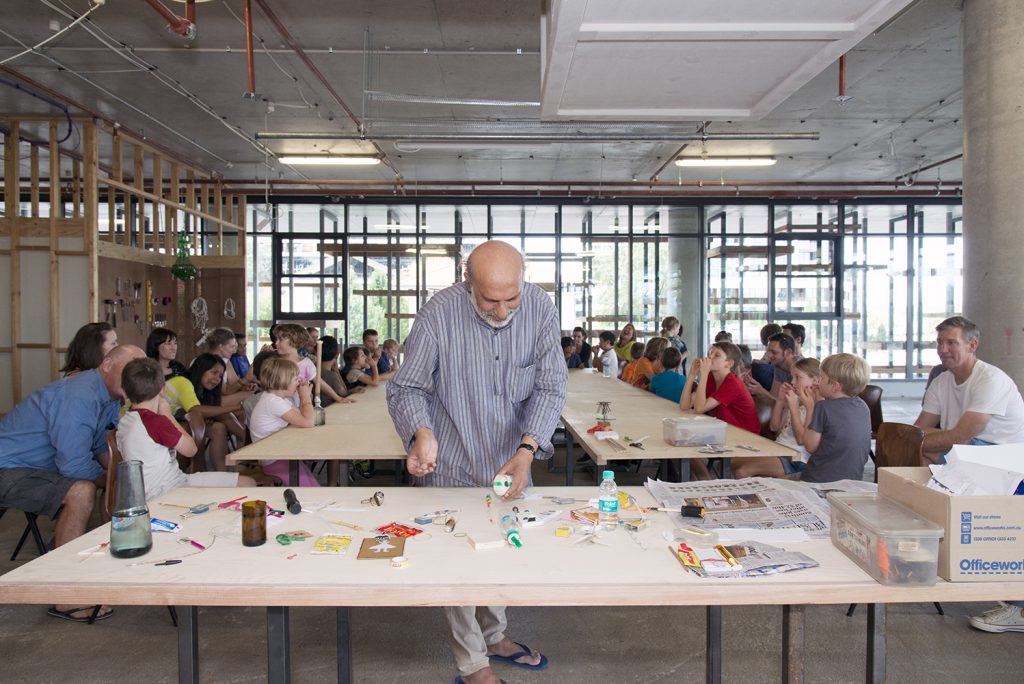THE GARBAGE MEN, THE GIRL, AND THE GOAL
Despite a population of some 20 million, the Greater Cairo Area, the largest urban area on the continent, had failed to establish a functional garbage collection system – a negligence that has led to unlikely entrepreneurial spirit. With a population comprising of more than 260,000 of the city’s poorest inhabitants, the Manshiyat Naser district is home to a group of Coptic Christians known as the Zabbaleen – garbage collectors in Arabic. An estimated 70,000 of them. With a self-explanatory moniker, the Zabbaleen are said to manage an astounding 40 per cent of Cairo’s rubbish; their expansive slum, nicknamed Garbage City, is a chaotic network of detritus – a ‘city’ comprised almost entirely of another man’s dregs.

Collecting directly from Cairo’s residents for a small fee – transporting their rubbish using anything from donkey carts to pick-up trucks – they recycle 80-85 per cent of what they collect. By hand. Conventional waste management businesses manage between 20-50 per cent. Living conditions are poor, and illness is rife – but their work emits a conflicting ray of hope: that a people with next to nothing can achieve something so momentous is nothing short of an embarrassment to the Western recycling industry – yet it also offers optimism for the existence of a truly circular economy. The Zabbaleen might be fuelled by necessity, but they possess valuable lessons to teach those of privilege.
Inspired by the people of this remarkable slum, Egyptian artist dina Amin (“I just don’t like how a capital ‘D’ looks”, she says) is obsessed with the intricacies that lie behind everyday objects, creating stop motion odes to the things that we so frivolously discard. “At first”, she begins, “I started to just take things apart and see how it all came together: what was inside, how it worked, why was it broken and so on.” Having trained as a product designer, Amin turned animator by chance, wanting to demonstrate to others exactly how those internal parts work as one.
Perturbed by the throwaway nature of the creative path she’d chosen, Amin’s switch to stop motion animation satisfies both creative and moral desires. “After finishing college”, she recounts, “I felt a lot of the things that we design end up thrown away, and it made me feel that design is somehow being wasted. I kept thinking, questioning whether we actually need all the things that we produce – and that led me to my Tinker Project.” That project is what the New Cairo–based creative calls #TinkerFriday, a weekly undertaking in which a random discarded or faulty product is disassembled and reassembled, adding an anthropomorphic edge that puts the fun into the learning process. The results are skittish shorts that reignite the value in forgotten objects, with Amin’s endearing style both harnessing the ingenuity of the Zabbaleen and rallying against the disposable culture of industrial design.

Running a series of workshops from 2015 to 2017, Canberra hotel cum art and design project, Hotel Hotel (now a member of the Ovolo Hotels chain under the name Ovolo Nishi), invited everyone from creative collaborators to school guests and locals to learn the art of upcycling. Offering a second life to broken glass; creating toys from trash; teaching the Indian notion of Jugaad (to fix something up by doing just enough with what’s on hand, finding your way as you go); the ongoing “Fix and Make“ programme – like dina Amin – urged its public to better understand the deluge of products they live among to grow independent of the manufacturers who employ planned obsolescence, and to better their relationship with consumption.
The hotel industry has a throwaway culture by default – educating guests on such issues is a critical step in the march towards a goal of significant change. It’s not too much of a stretch to suggest that every hotel worth their salt should consider initiatives like “Fix and Make“; assimilate the spirit of the Zabbaleen; or seek to collaborate with artists like dina Amin.











